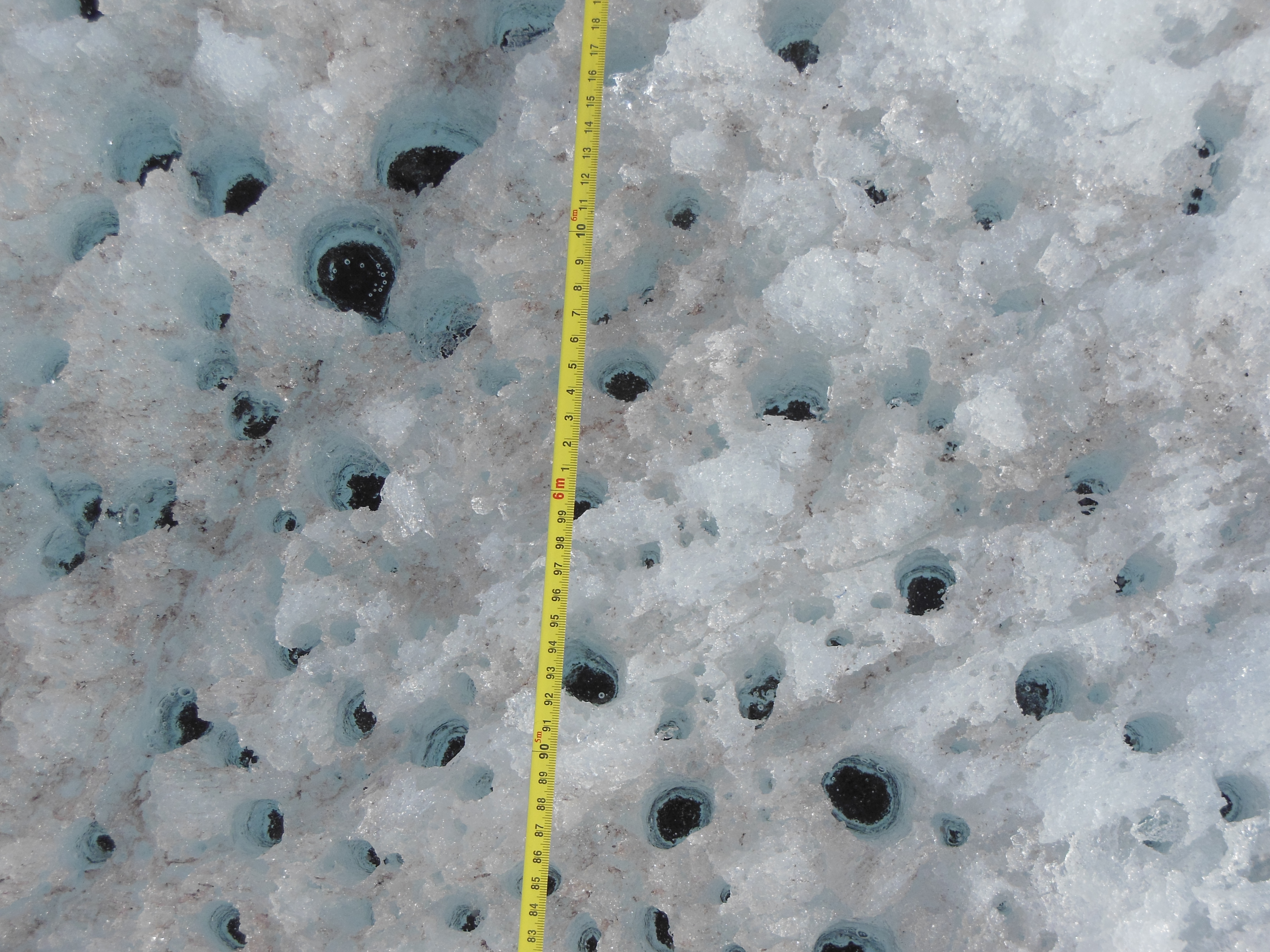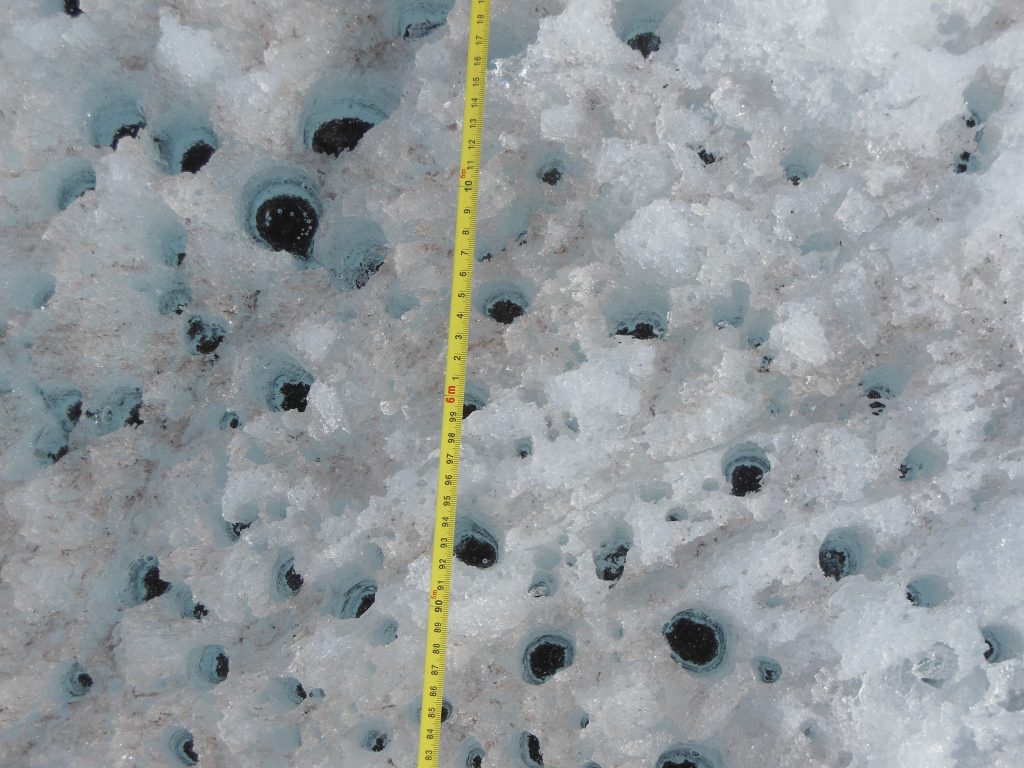Algae living on the surface of Greenland’s ice sheet are making it melt faster, researchers find.

Algae growing on the Greenland Ice Sheet significantly darkens the surface and is a more powerful warming agent than either black carbon or dust, a new study finds.
The study, published in the journal Geophysical Research Letters, establishes algae as an important factor driving the ice sheet’s melt, which in turn feeds sea-level rise.
The study did not quantify the extent to which algae melts ice. That work will be done in the future. Understanding the proliferation of algae on ice and its power as an absorber of solar heat “is expected to improve mass balance, runoff, and sea level projections from Greenland and other ice masses elsewhere,” the study concluded.
Black carbon — also known as soot — and dust that swirls in from elsewhere on the globe have long known to darken ice in Greenland and elsewhere in the Arctic, making it melt faster. But knowledge about algae and its impact on ice is new.
The study is based on field work on southwestern sector of the ice sheet in the summer of 2014. Scientists examined places where bare ice was exposed, measured how reflective those surfaces were, and collected samples of algae to determine abundance and types. The field work focused on an area of ice that darkens each summer — a seasonal transformation previously attributed to black carbon and dust but now found to be mostly the product of algae.
To a casual observer, algae may look like black carbon or dust, said co-lead author Marek Stibal, an ecologist at Charles University in the Czech Republic. Only when the ice algae is present in high densities does its reddish tint become apparent, he said in an email.
Making things more complicated, algae sometimes mixes with with black carbon or dust, said co-author Jason Box, a climatologist at the Geological Survey of Denmark and Greenland and the other co-lead author. But algae are bigger than black carbon or dust grains, generally more than 10 times as big, so they can obscure black carbon and dust, Box said by email. “Further, I think it’s fair to say that the bare ice algae are more abundant in overall concentration than black carbon and dust. And so the algae are the dominant darkening agent,” he said.
The findings concern only the effects of algae on bare ice, Stibal and Box said. When snow layers are on top of the ice, the calculations are different, they said. The snow surface is where soot and dust is deposited.
“Over a snow surface, above the bare ice area in elevation, black carbon can be the largest single darkening agent, if not dust. Scientists tend to group black carbon and dust as ‘light absorbing impurities’” Box said by email.
Algae, dust, black carbon and atmospheric heat all play parts in a self-perpetuating warming cycle.
Not only do the darkening agents hasten melt, but the heat likely hastens growth of algae, “as the melting area on the ice sheet (and elsewhere) will expand and the melt seasons will become longer,” Stibal said by email. In addition, mineral dust can supply nutrients — specifically, phosphorous — that help algae grow, though black carbon would not, he said.


